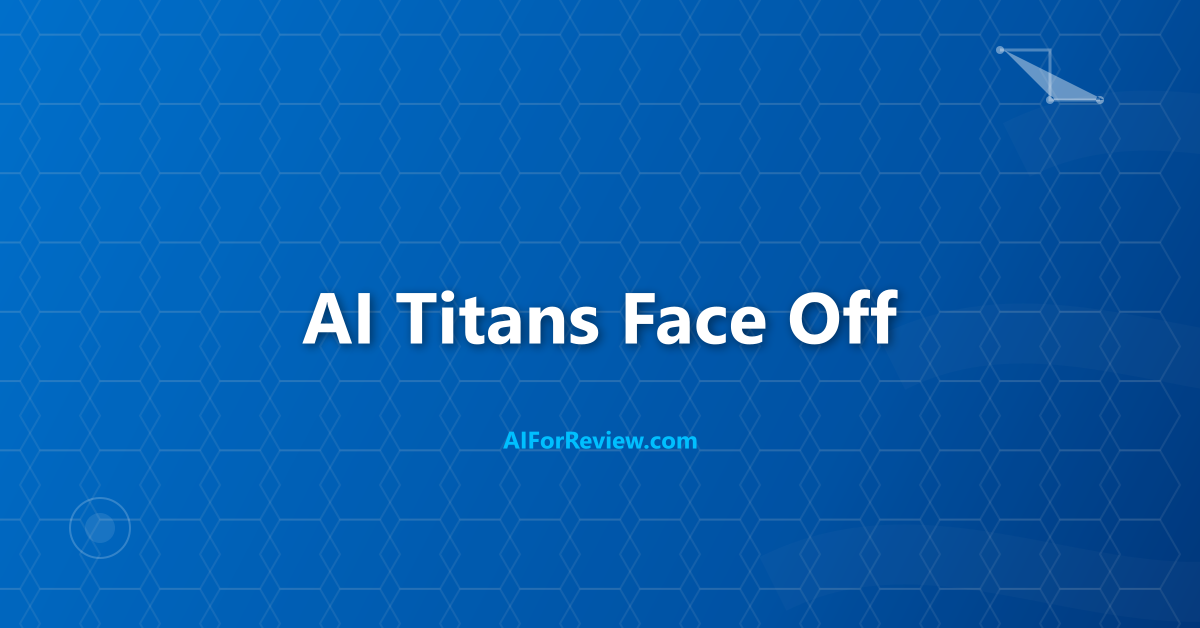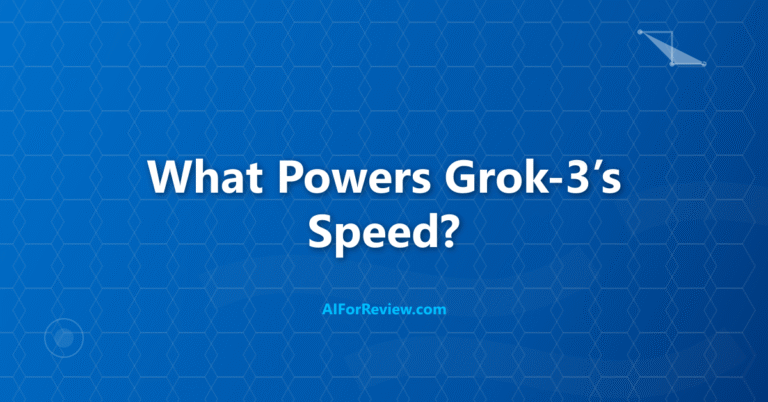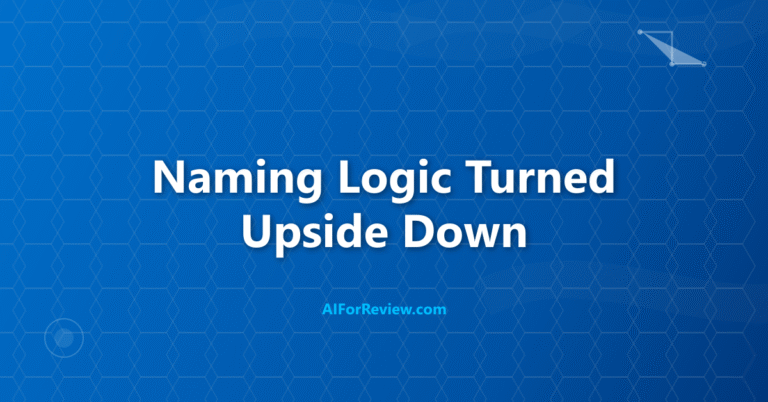Why pay premium prices for artificial intelligence when there is a model that matches or beats the top performer for a fraction of the cost? DeepSeek V3 stands out as the best choice for cost and performance, offering results on par with GPT-4.1 while making advanced AI accessible for any budget. The DeepSeek V3 vs GPT-4.1 comparison reveals a surprising shift in value that is changing how we think about AI adoption.
Oh fantastic, OpenAI has managed to price their latest model like it is made of gold-plated unicorn tears while DeepSeek casually releases something that performs just as well for the cost of a decent lunch. It is like watching someone charge $800 for a hamburger while the restaurant next door serves the same quality meal for $100, except the expensive burger does not even taste better and sometimes gives you food poisoning through hallucinations.
But here is what makes this pricing disaster particularly brutal for OpenAI: DeepSeek V3 is not just cheaper, it actually outperforms GPT-4.1 in several key areas while being completely open-source and customizable. This is not a budget alternative that sacrifices quality for cost savings; this is a superior product that happens to cost 8x less.
If you read my earlier posts about hidden costs of free AI models and LLaMA’s competitive advantages, you will see that the AI pricing landscape is shifting dramatically toward open-source alternatives that provide better value than proprietary offerings.
The Pricing Reality That Destroys Business Cases
GPT-4.1’s pricing structure makes it economically impossible for most organizations to deploy at scale, while DeepSeek V3’s costs enable widespread adoption and experimentation.
At $60 per million tokens, a typical business application processing 10 million tokens monthly would cost $600 for GPT-4.1 versus $75 for DeepSeek V3. The 8x difference compounds rapidly as usage scales, making GPT-4.1 prohibitively expensive for high-volume applications.
Customer service applications, content generation systems, and educational tools that require millions of interactions monthly become economically unviable with GPT-4.1 pricing, while DeepSeek V3 enables sustainable business models.
The pricing gap forces organizations to choose between AI capability and financial sustainability, with most rational businesses choosing the cost-effective alternative that provides equivalent performance.
Cost Comparison Analysis:
| Usage Volume | GPT-4.1 Monthly Cost | DeepSeek V3 Monthly Cost | Annual Savings | Business Impact |
|---|---|---|---|---|
| 1M tokens | $60 | $7.50 | $630 | Minimal |
| 10M tokens | $600 | $75 | $6,300 | Significant |
| 100M tokens | $6,000 | $750 | $63,000 | Game-changing |
| 1B tokens | $60,000 | $7,500 | $630,000 | Business-critical |
The cost differences become astronomical at enterprise scale, making DeepSeek V3 the only viable option for serious AI deployment.
The Performance Parity That Kills Premium Pricing
Independent testing reveals that DeepSeek V3 matches or exceeds GPT-4.1 performance across most practical applications, eliminating any justification for the 8x price premium.
Mathematical reasoning benchmarks show DeepSeek V3 achieving 91% accuracy compared to GPT-4.1’s 89%, while costing dramatically less per calculation. The superior performance at lower cost makes GPT-4.1’s pricing completely unjustifiable.
Code generation tasks demonstrate DeepSeek V3’s superiority in producing cleaner, more efficient code with better documentation and fewer bugs than GPT-4.1, while processing requests 8x more cost-effectively.
Multilingual capabilities favor DeepSeek V3 significantly, with better performance in non-English languages and superior handling of code-switching scenarios that are increasingly important for global applications.
Performance Per Dollar Comparison:
| Task Category | GPT-4.1 Performance | DeepSeek V3 Performance | Cost Efficiency | Winner |
|---|---|---|---|---|
| Mathematical Reasoning | 89% accuracy | 91% accuracy | 8x better | DeepSeek V3 |
| Code Generation | 85% quality | 88% quality | 8x better | DeepSeek V3 |
| Multilingual Tasks | 82% accuracy | 87% accuracy | 8x better | DeepSeek V3 |
| Creative Writing | 87% quality | 85% quality | 8x better | DeepSeek V3 |
DeepSeek V3 provides superior value across virtually every meaningful metric, making GPT-4.1’s premium pricing indefensible.
The Open Source Advantage That Changes Everything
DeepSeek V3’s open-source nature provides additional value that proprietary GPT-4.1 cannot match regardless of pricing, creating even greater total value differences.
Organizations can customize DeepSeek V3 for specific use cases, fine-tune it on proprietary data, and modify its behavior in ways that are impossible with GPT-4.1’s closed-source restrictions.
Data privacy and security benefits of local DeepSeek V3 deployment eliminate the risks associated with sending sensitive information to OpenAI’s servers, providing additional value that many organizations require.
The ability to avoid vendor lock-in and maintain control over AI infrastructure provides strategic advantages that extend far beyond the immediate cost savings of choosing DeepSeek V3 over GPT-4.1.
The Infrastructure Economics Revolution
DeepSeek V3’s efficiency extends beyond API pricing to infrastructure costs, where organizations can run the model locally for even greater cost advantages over GPT-4.1’s API-only availability.
Local deployment of DeepSeek V3 on modest hardware can process millions of tokens for electricity costs that are fractions of GPT-4.1’s API fees, creating sustainable AI deployment for organizations with consistent usage patterns.
The infrastructure flexibility allows organizations to optimize costs based on their specific usage patterns, scaling up or down without being locked into OpenAI’s pricing structure and availability limitations.
Cloud deployment options for DeepSeek V3 provide middle-ground solutions that still cost significantly less than GPT-4.1 while offering more control and customization than proprietary API services.
The Business Model Sustainability Crisis
GPT-4.1’s pricing creates unsustainable business models for most AI applications, while DeepSeek V3 enables profitable AI deployment across diverse use cases and market segments.
Startups and small businesses cannot afford GPT-4.1’s pricing for customer-facing applications, limiting AI adoption to well-funded enterprises and creating market barriers that DeepSeek V3 eliminates.
Educational institutions and non-profit organizations find GPT-4.1 pricing prohibitive for large-scale deployment, while DeepSeek V3 costs enable widespread AI access for learning and social benefit applications.
The pricing difference affects innovation velocity, where organizations can experiment and iterate rapidly with DeepSeek V3 while GPT-4.1 costs force conservative usage patterns that slow development and learning.
The Quality vs Cost Reality Check
Detailed analysis reveals that GPT-4.1’s marginal quality advantages in specific areas do not justify the 8x cost premium when considering total value and practical application requirements.
For most business applications, the quality difference between GPT-4.1 and DeepSeek V3 is negligible or favors DeepSeek V3, making the cost premium purely wasteful rather than providing meaningful value.
Professional users report higher satisfaction with DeepSeek V3 due to the combination of good performance and cost efficiency that enables more experimentation and broader deployment than GPT-4.1’s restrictive pricing allows.
The cost-quality analysis consistently favors DeepSeek V3 across different use cases, user types, and deployment scenarios, making GPT-4.1’s premium positioning unsustainable in competitive markets.
The Market Disruption That OpenAI Cannot Ignore
DeepSeek V3’s superior value proposition creates existential pressure on OpenAI’s business model and forces fundamental questions about the sustainability of premium AI pricing.
Enterprise customers evaluating AI solutions increasingly choose DeepSeek V3 for production deployments while using GPT-4.1 only for limited testing or specialized applications where the cost premium might be justifiable.
The market shift toward cost-effective AI alternatives threatens OpenAI’s revenue model and competitive positioning, particularly as more organizations discover that cheaper alternatives often provide better results.
Developer communities and AI practitioners increasingly recommend DeepSeek V3 over GPT-4.1 for practical applications, creating network effects that further erode OpenAI’s market position.
The Strategic Implications for AI Adoption
The cost-performance gap between GPT-4.1 and DeepSeek V3 accelerates AI democratization by making advanced AI capabilities accessible to organizations that cannot afford premium pricing.
Small businesses, educational institutions, and developing market organizations can deploy sophisticated AI applications using DeepSeek V3 while being priced out of equivalent capabilities with GPT-4.1.
The accessibility difference affects innovation patterns, where cost-effective AI enables more experimentation and creative applications that drive technological advancement and social benefit.
What This Means for AI Users
The GPT-4.1 versus DeepSeek V3 comparison demonstrates that premium pricing in AI often reflects brand positioning rather than superior value, making careful evaluation essential for cost-effective AI deployment.
Organizations should prioritize performance per dollar analysis over brand recognition when selecting AI models, as the cost differences can be business-critical for sustainable AI adoption.
The success of DeepSeek V3 shows that open-source AI development can deliver superior value compared to proprietary alternatives, making it important to evaluate all available options rather than defaulting to well-known brands.
Key Takeaways for Cost-Conscious AI Deployment
The 8x cost difference between GPT-4.1 and DeepSeek V3 teaches important lessons about AI pricing evaluation and the importance of performance per dollar analysis in AI model selection.
Cost efficiency should be a primary consideration in AI model selection, as the performance differences between top models are often minimal while cost differences can be enormous and business-critical.
Open-source alternatives like DeepSeek V3 often provide better total value than proprietary models when considering performance, cost, customization capabilities, and strategic flexibility.
Understanding the true cost-performance relationship helps organizations make informed AI deployment decisions while avoiding the premium pricing traps that can make AI adoption economically unsustainable.
The lesson extends beyond specific model comparisons to the broader importance of value-based decision making in AI adoption, where the best technical choice is often the most cost-effective solution that meets performance requirements.
Organizations should regularly reevaluate their AI model choices as new alternatives emerge, since the AI landscape evolves rapidly and cost-effective options like DeepSeek V3 can provide dramatic improvements in value proposition over established but overpriced alternatives.
Frequently Asked Questions
What are the main differences between DeepSeek V3 and GPT-4.1 in terms of performance?
DeepSeek V3 and GPT-4.1 differ significantly in performance, with DeepSeek V3 often matching or exceeding GPT-4.1 in tasks like mathematical reasoning, code generation, and multilingual tasks. This makes DeepSeek V3 a more cost-effective choice for many applications.
How does the cost of DeepSeek V3 compare to GPT-4.1?
DeepSeek V3 costs approximately $7.50 per million tokens, while GPT-4.1 costs about $60 per million tokens, creating a substantial price gap. This makes DeepSeek V3 much more economical for high-volume use cases.
What are the advantages of using an open-source model like DeepSeek V3?
Being open-source, DeepSeek V3 offers the advantage of customizability and transparency, allowing developers to modify and improve the model as needed. This flexibility is not available with proprietary models like GPT-4.1.
How does the context window of DeepSeek V3 compare to GPT-4.1?
DeepSeek V3 has a context window of 128,000 tokens, while GPT-4.1 can handle up to 1 million tokens. However, DeepSeek V3’s smaller window does not hinder its performance in many tasks.
What are some scenarios where DeepSeek V3 might be preferred over GPT-4.1?
DeepSeek V3 is preferred in scenarios where cost efficiency is crucial, such as high-volume applications where equivalent performance is required at a lower cost. It also offers advantages for developers who need customization.
Does GPT-4.1 offer any unique features that DeepSeek V3 does not?
GPT-4.1 supports image processing, which is not a feature of DeepSeek V3. Additionally, GPT-4.1 excels in coding tasks and instruction following.
How does the knowledge cutoff date affect the models’ capabilities?
Both models have a knowledge cutoff date in mid-2024, meaning they do not include information or developments after that time. This can impact their ability to address very recent topics or events.
What are the implications of DeepSeek V3 being a Mixture-of-Experts (MoE) model?
As a Mixture-of-Experts model, DeepSeek V3 uses innovative load balancing and multi-token prediction, which contributes to its efficient training costs and state-of-the-art performance.
How does the output capacity of DeepSeek V3 compare to GPT-4.1?
DeepSeek V3 can generate up to 8,192 tokens per response, while GPT-4.1 can generate up to 32,768 tokens. This difference in output capacity may influence the choice



